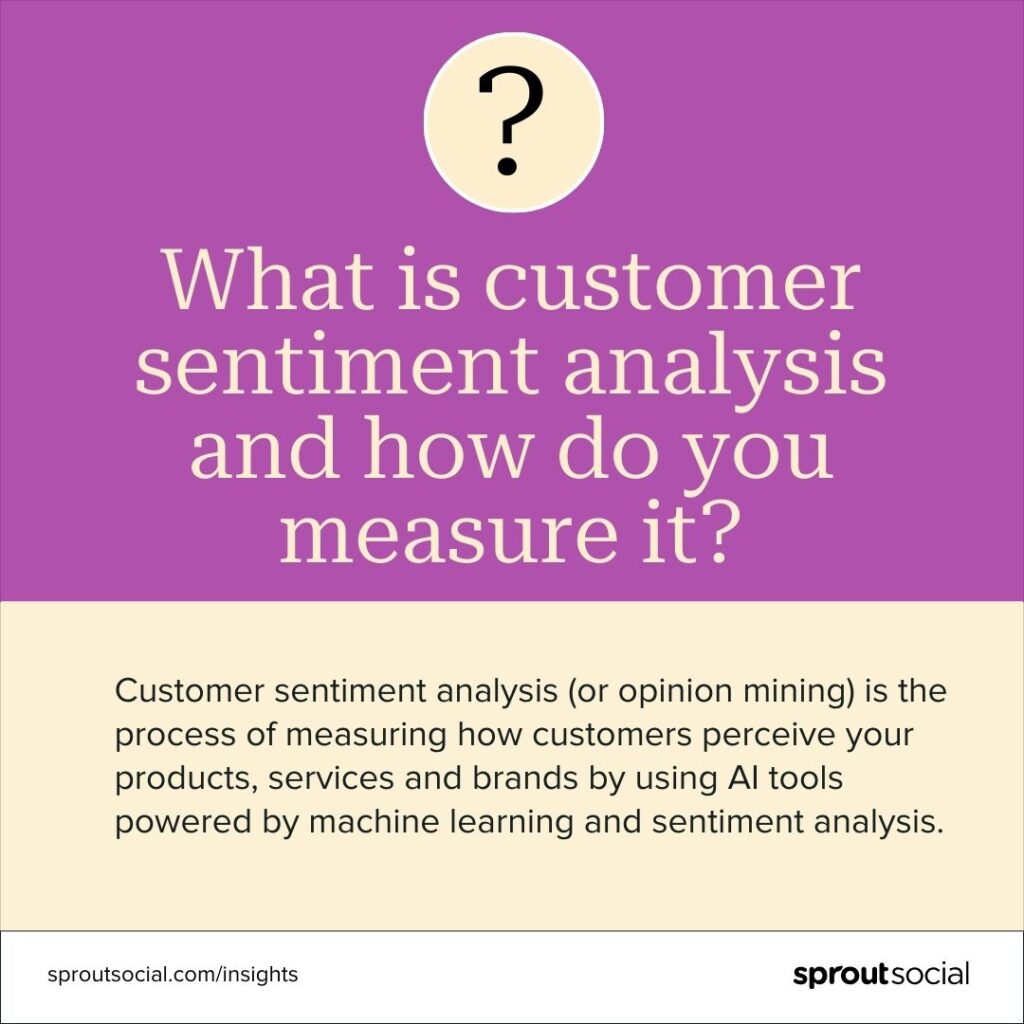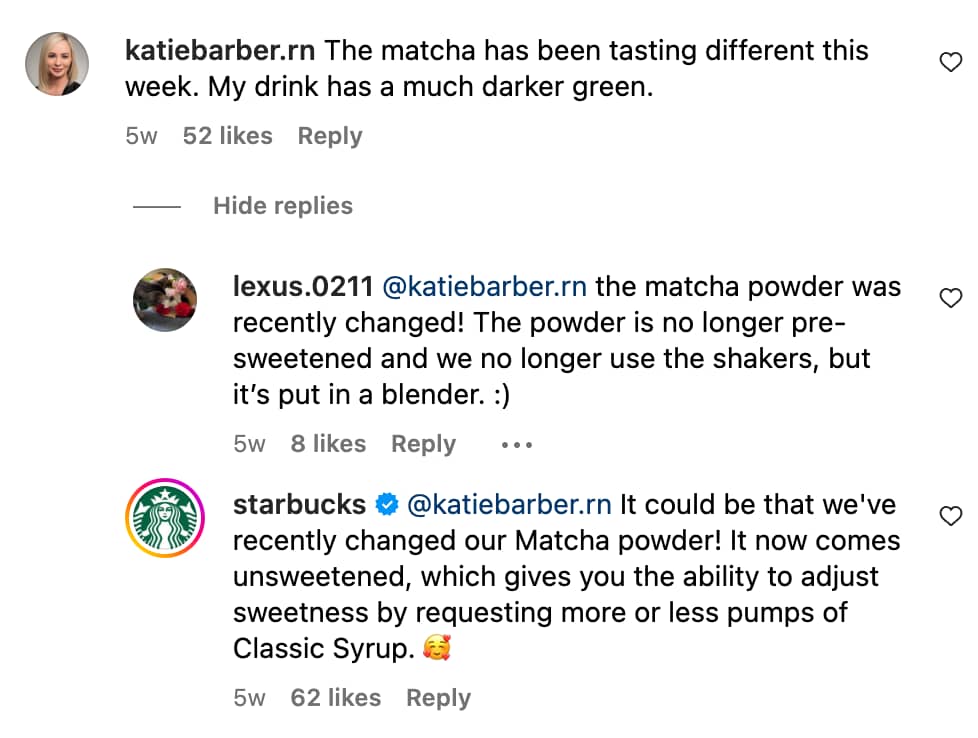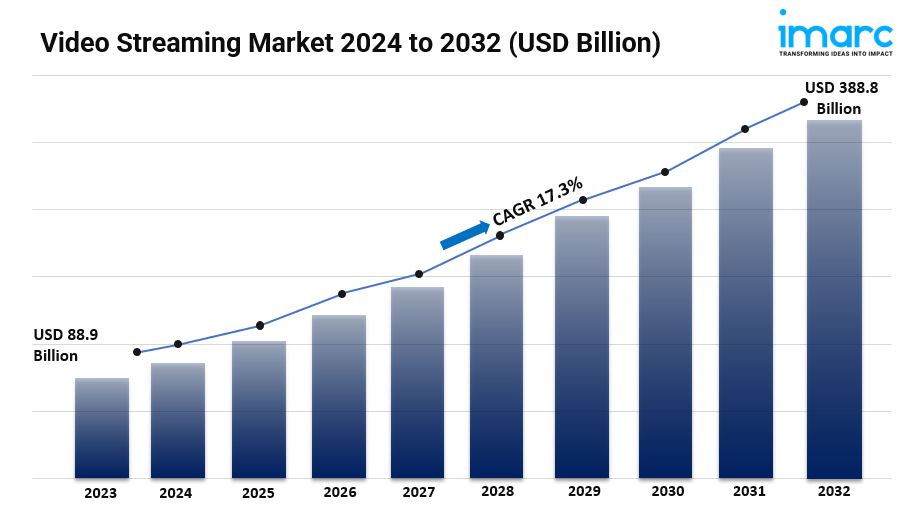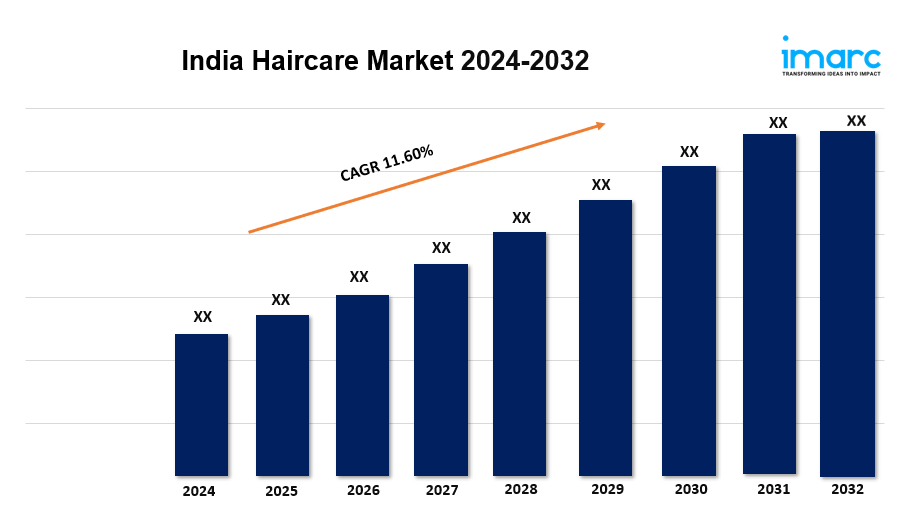Customers expect brands to listen and engage. According to The 2025 Sprout Social Index™, 73% of social users agree if a brand doesn’t respond on social, they’ll buy from a competitor. As a business, you need to deliver great customer experiences while keeping up with these changing demands.
Part of that equation is understanding how customers think and feel about your brand. That’s what sentiment analysis is all about. By tracking and interpreting customer sentiment, you gain the insights needed to refine your strategy, strengthen relationships and stay ahead.
By the time you’re done reading, you’ll understand how to measure sentiment and how to use it to improve customer experience.
What is customer sentiment?
When a customer comments on a post or shares a photo about your brand, they’re expressing a sentiment, such as joy, frustration or disappointment. This is customer sentiment—the emotions behind your voice of customer (VoC) data.
AI-powered sentiment analysis does the heavy lifting, transforming what would be hours of manual review into practical insights.
Sprout's Smart Inbox and Social Listening enable you to monitor these emotional signals in real time. With the help of tools like these, customer sentiment becomes your compass, guiding you toward more authentic response strategies and better brand experiences.
What is customer sentiment analysis and how do you measure it?
Customer sentiment analysis (or opinion mining) is the process of measuring how customers perceive your products, services and brands by using AI tools powered by machine learning and sentiment analysis. Analyzing customer sentiment data empowers you to respond more quickly and anticipate shifts in brand perception before they occur.

Sentiment analysis is like a temperature check on perception, revealing whether your audience is hot (positive), cold (negative) or room temperature (neutral), and why. That temperature reading will give you a clearer picture of the customer experience and provide insights you can use to warm up your customers.
Consider how the Atlanta Hawks used sentiment analysis to refine their social media strategy. Using Sprout’s Tagging feature, they documented which content types and themes resonated with fans, helping them tailor their content more effectively. This data-driven approach led to a 127.1% increase in video views and a 170.1% growth in their Facebook audience over a three-month period.
Measuring sentiment seems tricky, but AI marketing tools make it possible. Sprout's AI automates this entire process, analyzing thousands of comments across multiple platforms in moments. Beyond identifying sentiment, it connects these insights with your CRM tools, giving you a comprehensive view of how customers feel throughout their journey with your brand.
Keep reading to learn different sentiment analysis methods and how to turn insights into action.
The benefits of customer sentiment analysis
Here are six ways AI-powered sentiment analysis enhances customer sentiment and experience:
Monitor and improve customer satisfaction
Negative sentiment is often a sign that something isn’t working. Research shows customers are more likely to leave feedback when they’re dissatisfied than happy. That means if you’re not monitoring sentiment, you’re missing key insights into what needs improvement.
Sprout’s sentiment analysis tool combines social listening and review management, giving you an up-to-date snapshot of sentiment and trends in a single dashboard. By tracking shifts in sentiment and spotting patterns in neutral or negative comments, you can quickly identify issues and take action before they escalate.
For example, Google used sentiment analysis to pinpoint growing frustration over spam-filled search results. In response, it rolled out a major update to improve search quality and customer satisfaction.
No brand loves getting negative feedback, but sentiment analysis turns it into an opportunity. By surfacing what’s broken faster, you can make informed decisions and improve the customer experience.
Resolve issues faster and reduce support backlog
Like a pot of water on a hot element, dissatisfied customers will only wait so long for a reply before they boil over and take their business elsewhere. Sentiment analysis tools, like Sprout, can prevent this from happening.
Sprout’s Smart Inbox uses sentiment analysis to automatically prioritize incoming messages and reviews by sentiment, saving your support team time and guesswork. This reduces wait times and prevents tickets from piling up.
Identify product and service gaps
Tracking sentiment reveals opportunities to improve products and services.
For example, Indiana University used Sprout’s solution to identify a major student pain point: parking frustrations. By monitoring social conversations, they identified recurring complaints about permit costs, availability and construction-related issues. The social team reported their findings to leadership, initiating a broader discussion about the problem.
By identifying these gaps and fixing them, brands gather more positive reviews, attracting more customers. A study found that 58% of consumers would pay more to support a company with good reviews.
Trending topics and sentiment analysis are both incredibly valuable on their own. But together, they show you what customers love and where you can refine your offerings.
Reduce churn and build brand loyalty
AI-powered sentiment analysis empowers you to help unhappy customers right away.
Sprout’s Reviews Feed pulls all your reviews from different sources into one stream. From there, you can filter by sentiment and respond to negative reviews immediately, reducing churn.
Sentiment analysis tools also identify opportunities to engage positively. When your customer care team answers questions and provides timely, personalized responses to happy customers, like the response you see below, it builds brand loyalty.

By leveraging sentiment analysis to tailor customer service, brands can repair lost trust, exceed expectations and make customers feel valued.
Enhance personalization and customer interactions
Salesforce found that 66% of customers will switch brands if they feel “like a number rather than an individual.”
The fastest way to frustrate a customer with your reply is to make them feel like you’ve just copied and pasted a templated response. Sentiment insights tell you how customers feel so your customer care team can match their energy and go beyond surface-level engagement.
Sprout’s sentiment analysis, combined with tools like Smart Inbox and Social Listening, make this effortless. By automatically detecting tone and emotional context, it helps your team craft replies that feel empathetic rather than robotic.
From there, your customer care team can engage with personalized responses rather than canned replies, proving they’re paying attention. Features like Saved Replies make it easy to scale personalized engagement by giving your team a library of adaptable responses so customers feel heard, not handled.
Gain real-time customer insights to inform strategy
Sentiment analysis can help you capture instant feedback during product launches and campaigns. This allows you to react promptly, preventing issues from snowballing.
For example, let’s say a video game company drops a new game and monitors social media and gaming forums for player reactions. Within hours, they detect a pattern of complaints about a difficult level, which is causing players to lose interest.
Acting on these real-time insights, the company releases a patch to adjust the difficulty settings and posts tips for navigating the challenging sections. By doing so, they prevent early negative reviews from damaging the game’s reputation.
Brands use customer sentiment analysis to improve their marketing, business and customer care strategies. Want to see how top companies do it?
Here are 3 examples of how to leverage sentiment analysis to gain customer insights.
Factors that affect customer experience and customer sentiment
Customer experience is how people feel as they interact with your brand. Did they have such a great experience they’re going to tell everyone? Or did the experience leave them feeling differently about your brand?
Here are a few key factors that influence perception and loyalty.
Product quality and pricing
Customers expect products to match their price and promised value. When experiences don’t align with expectations, it creates cognitive dissonance, which can lead to negative sentiment if not addressed.
The 2025 Index showed consumers favor brands with high-quality products, proving that marketing alone can’t compensate for poor experiences.
Take Starbucks, for example. The brand is known for its creative beverages, customizable options and premium pricing, which means customers expect consistency with every order.
In one instance, a customer commented that their local Starbucks matcha drink didn’t taste as expected. Starbucks quickly responded with an explanation for the inconsistency. In doing so, the brand showed they take customer concerns seriously.

Customers want to be able to depend on brands. This example shows that when brands take feedback seriously, they have a better chance of keeping customers satisfied.
Response time and customer care
When it comes to customer care, first response time matters. Almost three-quarters of consumers expect a response on social within 24 hours or less (a trend that has remained steady in our Index reports from 2022 and 2023).

Sprout’s Smart Inbox brings all your social messages into one place, so no inquiries get overlooked. With sentiment tagging, your team can spot urgent issues faster and jump in before a small concern becomes a bigger problem.
Prioritizing thoughtful and fast interactions, especially when addressing complaints, helps build trust and keep customers engaged.
Brand messaging and engagement
When campaigns resonate, they’ll lift positive sentiment; when they miss the mark, they’ll confuse or even alienate the audience. Having a sentiment-driven marketing strategy is key to customer loyalty.
Customers want to feel seen and understood. Your brand's communication (tone and consistency) and interactions with customers on social media shape perception.

Sephora analyzes customer sentiment to see what excites its audience. Then, it adjusts its promotions and messaging to match, creating more relevant experiences and building deeper customer loyalty.
Sprout’s sentiment analysis tools help you stay in tune with your audience at every stage of the customer journey. By tracking how sentiment shifts from awareness to purchase to post-sale engagement, you can adjust your messaging to keep customers engaged every step of the way.
How to measure customer sentiment
How do you accurately measure customer perception? It starts with gathering data from a wide range of sources. Relying on just one channel can create blind spots and lead to skewed insights.
Here are the best ways to measure customer sentiment.
AI tools to analyze and measure customer sentiment
A single review is like one star in the sky. Sprout’s sentiment analysis tool helps you zoom out, see the whole night sky and recognize the constellations that shape it.
Instead of getting caught up in one-off comments, you get a holistic view of how customers feel about your brand across social media, reviews and online conversations, all in one place.
AI-powered sentiment analysis makes sense of massive amounts of data, using natural language processing (NLP) and machine learning (ML) to categorize sentiment as positive, negative or neutral. It’s like mapping the night sky, revealing the patterns and trends that shape your audience’s perception over time.
Sprout gives you a continuous pulse on sentiment enabling you to track the customer experience lifecycle. When sentiment shifts, you’ll know immediately and can adjust your messaging, fine-tune your service and strengthen relationships at every touchpoint.
Curious how Sprout’s sentiment analysis tool can level up your business and social strategy? Watch the video below to see it in action.














